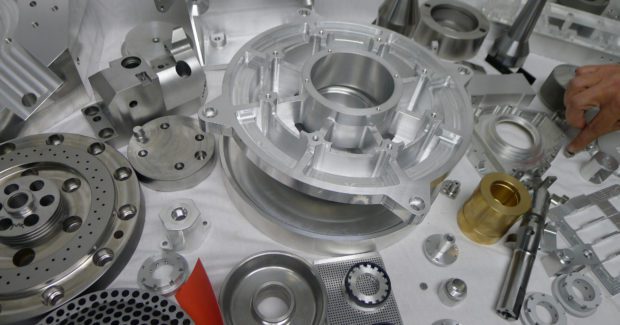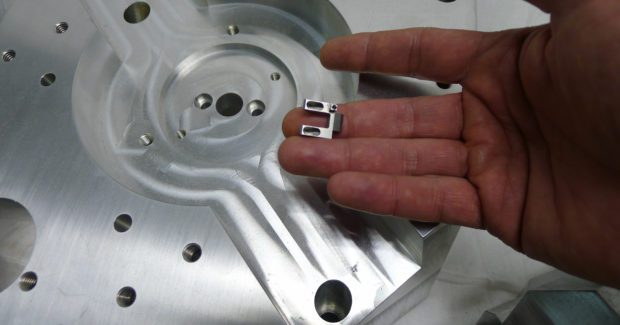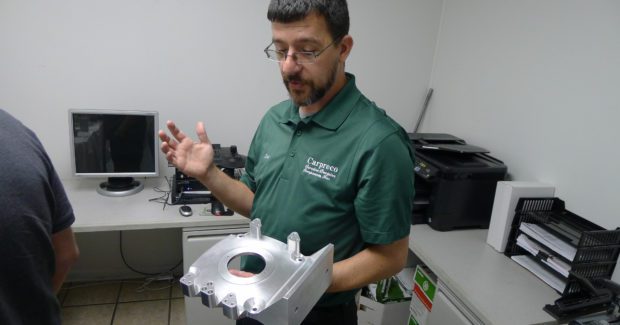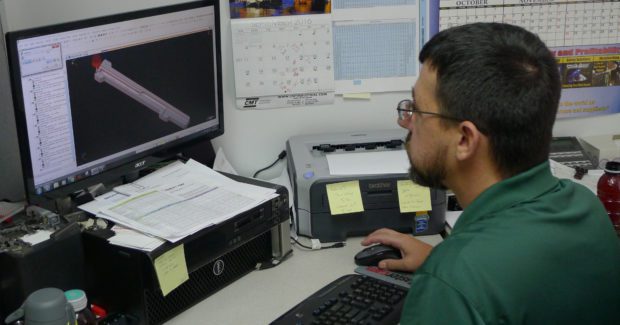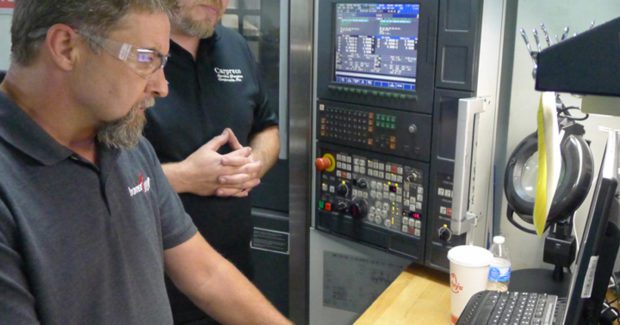Staying Lean with CAM
Advanced CNC programming software allows this shop to capture business with improved “one and done” efficiencies on their multi-axis equipment, from one-offs to tens of thousands of parts. Their quality and pricing is now so competitive that it is more economical to buy the part locally than pay for shipping.
Posted: May 29, 2017
In 2008, Carolina Precision Components, Inc. (Granite Falls, NC) moved their machine shop business from a 5,000 sq ft building in Valdese to their current 60,000 sq ft facility in Granite Falls. Since around that time, their volume of work has grown steadily and they have been able to add two to four CNC machine tools annually. The addition of all of this equipment would not have been possible without the extra floor space, and the investment would not have been feasible were it not for their installation at the same time of a powerful CAD/CAM software package for programming complex parts. Up until the move, all of the CNC programming was done manually at the machine, a practice that hampered shop productivity on parts with difficult geometry, where programming took such a long time that the machines were left idle.
Even worse, the shop turned down a lot of higher margin work, particularly molds and dies, because the geometry was too difficult to program at the machine. Opportunity for profit through production was replaced by the risk of not making chips as the code was being written. But all of this began to change after the company began using Mastercam® software from CNC Software, Inc. (Tolland, CT) to program the more difficult parts. “When you are programming at the machine, you really can’t see ahead,” said process engineer Kennith Englert. “Mastercam gives us the ability to look ahead and see what materials have been removed, and helps us plan ahead on how to process it. To me that is priceless. There were so many times when I was programming at the machine that I backed myself into a corner and had to start over. When we installed this CAD/CAM software, that issue didn’t hold us back anymore.”
Englert recalls how, during that time, many custom job shops were going out of business. Word got out that Carolina Precision was turning work around very quickly with their new CAD/CAM capabilities, often in one to three days. New business came in and the shop worked their way past the economic slowdown. Because of their improved manufacturing efficiency and space availability, one of their major customers decided to transfer one of their low volume manufacturing operations and several CNC machine tools over to the company. As the volume of work steadily increased, Englert discovered additional ways to keep pace with the workflow by using the advanced CAD/CAM capabilities of the software. Being able to select features from the model and automatically generate toolpaths for making them has been a big contributor to efficiency, with simulation being another. Using simulation throughout the programming process insures that the toolpaths are both safe and accurate. Simulation of programs is so fast and accurate that Englert frequently uses it for analyzing jobs and quoting them. All these features work in concert.
For example, Englert recently created a toolpath for drilling hundreds of holes by creating the toolpath for one, then dragging a window across the entire part to select all of them to be machined in the same fashion. This reduced hours of programming to a matter of minutes. Then he switched the tool used in the program to a carbide drill. Simulation showed a cycle time that was reduced from 40 minutes to just 12 minutes. One carbide drill can make an entire run of 25 parts. For similar jobs in the past, a conventional drill had to be replaced after three parts. The simulation feature can be used to predict cycle time improvements like this very accurately, in less than a minute. Englert uses this information strategically to win business while maintaining profitability.
Another productivity enhancing capability that the shop is using with increased frequency is Dynamic Motion technology, which analyzes material conditions ahead of the tool to generate optimal material removal rates throughout the cut without any danger of burying and breaking the tool (or worse). “With Dynamic Motion you can reduce machine cycles for many parts by 50 percent,” noted Englert. “During one of my first exposures to this approach, my colleague John Johnson showed me how we could take a part with a 25 minute roughing cycle down to just 12 minutes. We can also reduce tooling costs by using the full depth of the cutter instead of stepping down with just a small area of the cutter repeatedly. That was a real eye opener.”
Some of the most recent additions to the shop floor have been advanced manufacturing systems, including 5-axis mills and lathes with live tooling. Johnson, who oversees creating the programs for this equipment, has posted dozens of examples of these, sometimes micron precision, sculptured components on the company’s Instagram page. For many of these jobs, the CAD for CAM capabilities of Mastercam are invaluable for creating workholding solutions that help resolve complex tool presentation and reach issues that allow expensive parts to be manufactured in a single machining operation. With increased frequency, many of these one-off projects have turned into production manufacturing contracts. When this happens, the programmers use the software to go into a complex part program and shave off seconds of “dead time” throughout the program to enhance profitability: Englert recently took a three-hour cycle down to two and a half. That is a substantial gain for a 500-part run.
Carolina Precision Components now has 37 CNC machine tools that are being supported by a programming staff of three people. This is likely to change as work continues to flow in. Improved “one and done” efficiencies on multi-axis equipment are allowing the company to capture business, from one-offs to tens of thousands of parts. Their quality and pricing is so competitive that it is more economical to buy the part locally than pay for shipping.
Carolina Precision Components, Inc., 4181 U.S. Highway 321-A, Granite Falls, NC 28630, 828-496-1045, www.carpreco.com.





